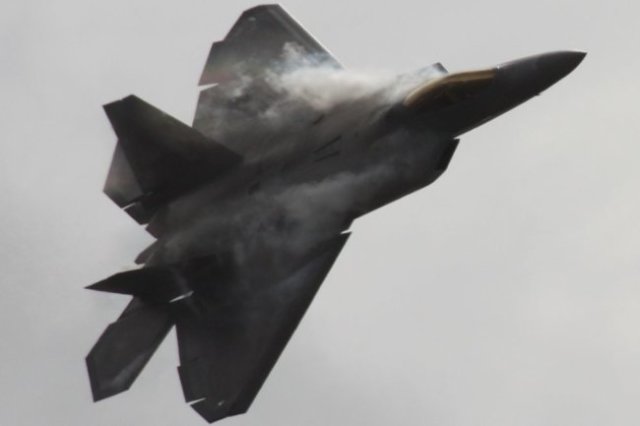The reason for the death of the American F-22 fighter was the mistakes made when washing the aircraft - they affected the operation of the sensors. Air Force Times managed to get acquainted with the results of a closed investigation conducted by the US Air Force bypassing the usual procedure.
The fighter jet crashed on March 15, 2020, immediately after takeoff from Eglin Air Force Base in Florida. The pilot ejected and was not injured, the plane completely burned down. During the rescue operation, another disaster almost occurred - the F-35 and F-22 aimed at searching for the pilot almost collided in the air.
The usual investigation was not conducted in such cases. A year and a half after the emergency, the US Air Force command reported - and then at the request of the editorial board - that the causes of the accident were established in a different way "for operational safety reasons." The crashed plane belonged to the 43rd Fighter Squadron - the only unit in the Air Force where F-22 pilots are trained.
At 8.28 local time, the pilot with the call sign "Hornet 1" received permission to take off. He was to take part in a training dogfight involving four F-16s, six F-35s and three Raptors. During acceleration, a warning flashed on the instrument panel, but the plane behaved normally and the pilot continued to take off. At an altitude of about 18 meters, the F-22 began to list to the left.
- I thought that maybe the afterburner on the left engine had turned off, - the pilot told investigators. He reduced the throttle and the plane leveled off. The wingman flying behind with the call sign "Hornet 2" reported that both engines of the leader were working normally. A couple of seconds later, a new warning flashed in the cockpit - about the absence of data from air sensors - after which the plane banked sharply to the left. The plane almost turned over, Hornet 2 later said.
The pilot managed to level the fighter again, he turned around and went to land. Soon another warning appeared - about excessive overload. The plane was trying to turn upside down, as if performing a "barrel", it cost the pilot a lot of effort to keep it in a normal position. Noticing that the altitude and speed indicators on the display differ significantly from the reports of the slave, Hornet 1 decided to eject. The unguided fighter went into a tailspin and fell into the forest. The pilot escaped with bruises and scratches, he was picked up by a ground search team.
When the pilot was seated in a car that drove up, the F-22 and F-35 fighters sent to search for him almost collided. The Air Force headquarters called it "a training opportunity for future emergency coordination." And the cause of the crash, according to the conclusions of the commission created in the squadron, were mistakes made when washing the aircraft - they "affected the operation of its external sensors."
The damage from poor washing exceeded 202 million dollars. In addition to the cost of the fighter itself ($ 201.6 million), this includes the price of two CATM-9 training missiles (32 thousand dollars apiece) and the damage caused to the environment - it was estimated at $ 850 thousand.
Anton Valagin






